SLVSAM8D July 2013 – August 2019 TPS63050 , TPS63051
PRODUCTION DATA.
- 1 Features
- 2 Applications
- 3 Description
- 4 Revision History
- 5 Device Comparison Table
- 6 Pin Configuration and Functions
- 7 Specifications
- 8 Detailed Description
- 9 Application and Implementation
- 10Power Supply Recommendations
- 11Layout
- 12Device and Documentation Support
- 13Mechanical, Packaging, and Orderable Information
Package Options
Mechanical Data (Package|Pins)
Thermal pad, mechanical data (Package|Pins)
Orderable Information
9.2.3 Application Curves
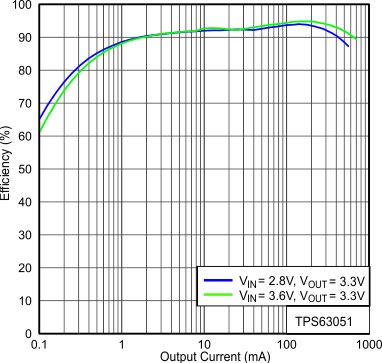
| PFM/PWM = Low | VOUT = 3.3 V |
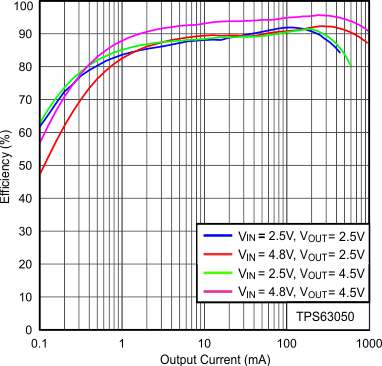
| PFM/PWM = Low | VOUT = 2.5 V, 4.5 V |
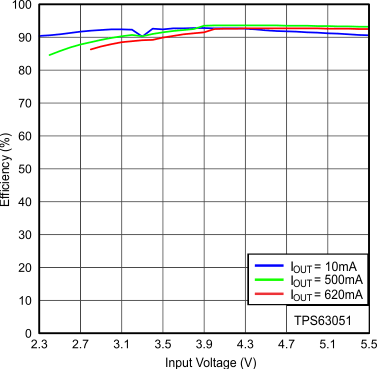
| PFM/PWM = Low | VOUT= 3.3 V |
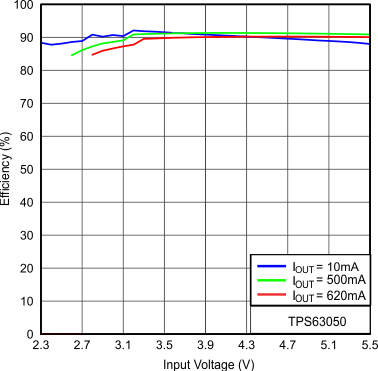
| PFM/PWM = Low | VOUT = 2.5 V | |
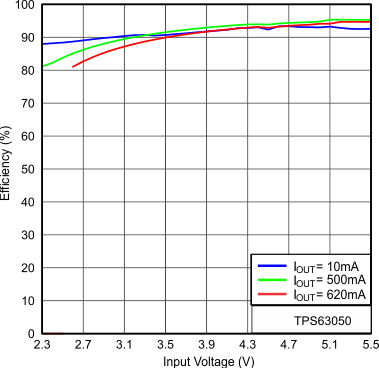
| PFM/PWM = Low | VOUT = 4.5 V | |
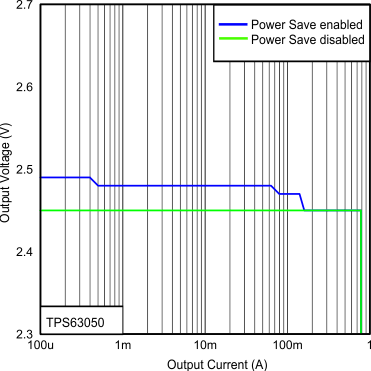
| VIN = 2.5 V |
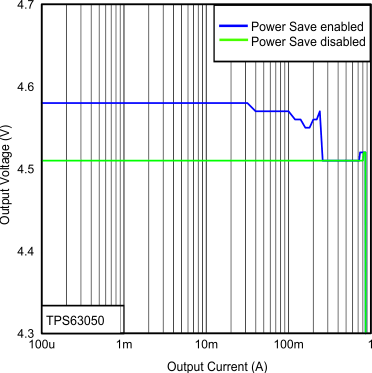
| VIN = 4.5 V |
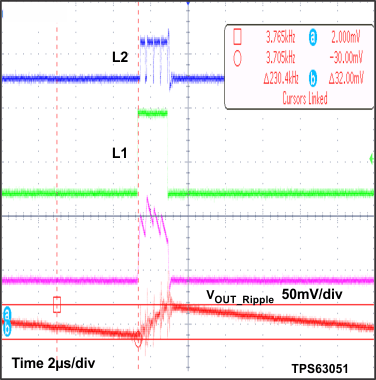
| VIN = 2.8 V | IOUT = 16 mA | |
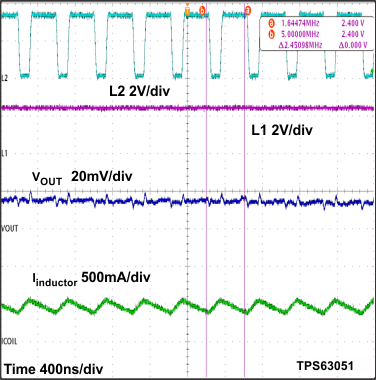
| VIN = 2.5 V | IOUT = 300 mA | |
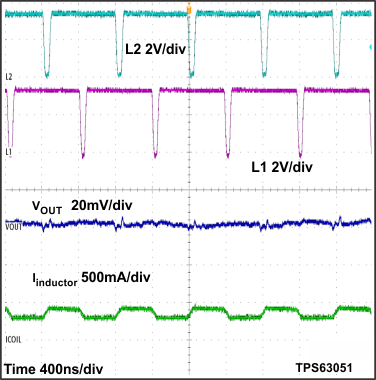
| VIN = 3.4 V | IOUT = 300 mA | |
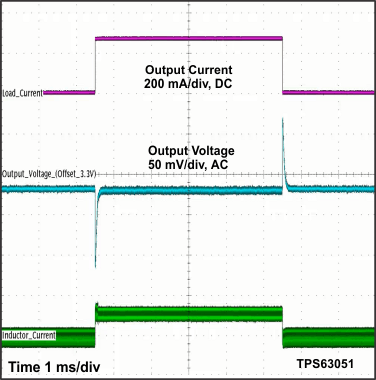
| VIN = 3.6 V | Load change from 0 mA to 300 mA |
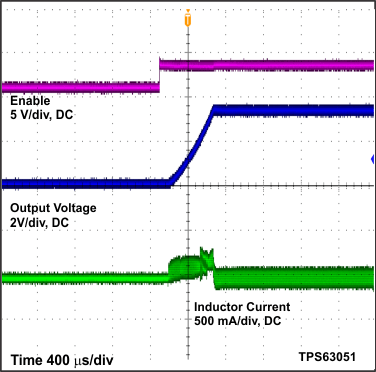
| VOUT = 3.3 V | VIN = 2.5 V | IOUT = 0 mA |
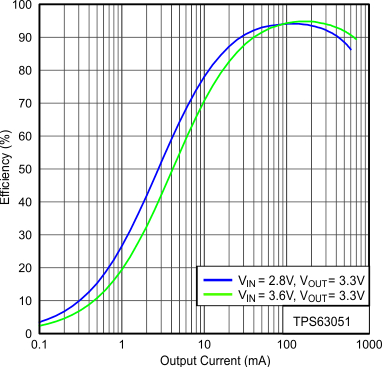
| PFM/PWM = High | VOUT = 3.3 V |
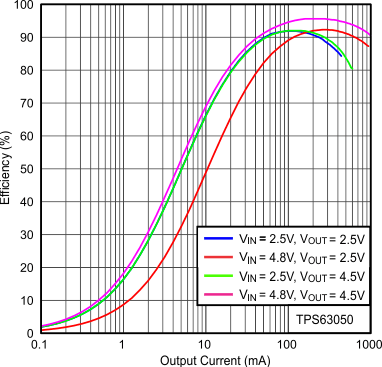
| PFM/PWM = High | VOUT = 2.5 V, 4.5 V |
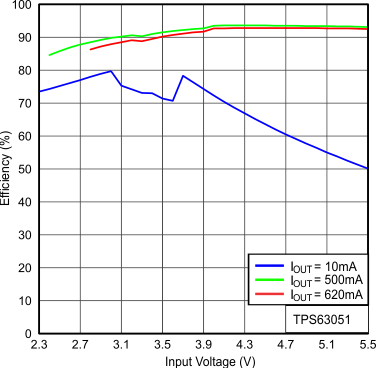
| PFM/PWM = High | VOUT= 3.3 V | |
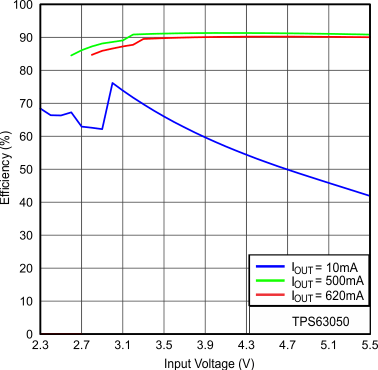
| PFM/PWM = High | VOUT = 2.5 V | |
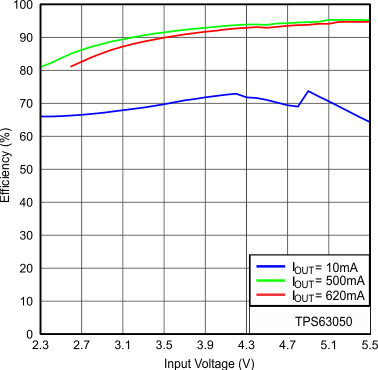
| PFM/PWM =High | VOUT= 4.5 V | |
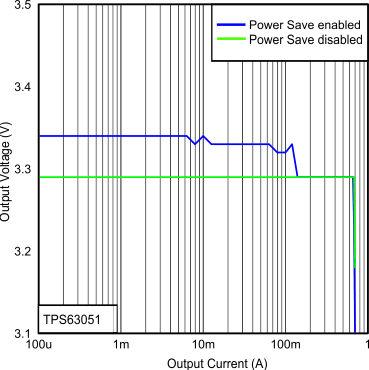
| VIN = 3.3 V |
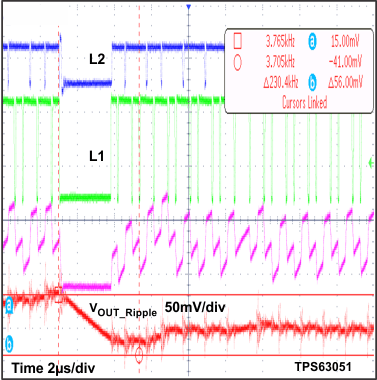
| VIN = 3.3 V | IOUT = 145 mA | |
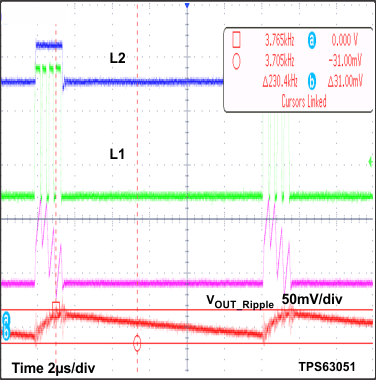
| VIN = 4.2 V | IOUT = 16 mA | |
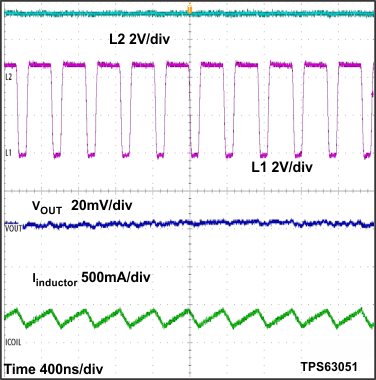
| VIN = 4.5 V | IOUT = 300 mA | |
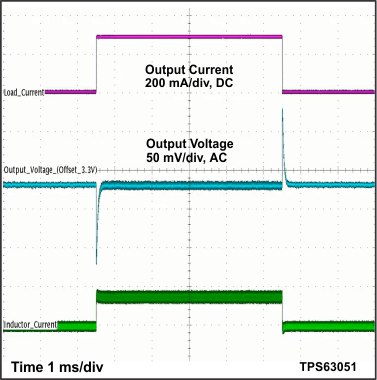
| VIN = 2.8 V | Load change from 0 mA to 300 mA | |
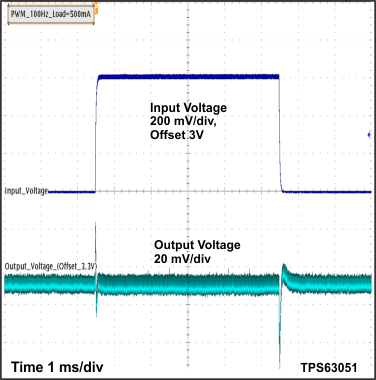
| VOUT = 3.3 V | IOUT = 500 mA |
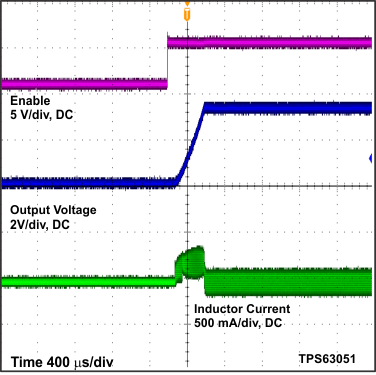
| VOUT = 3.3 V | VIN = 4.2 V | IOUT = 0 mA |